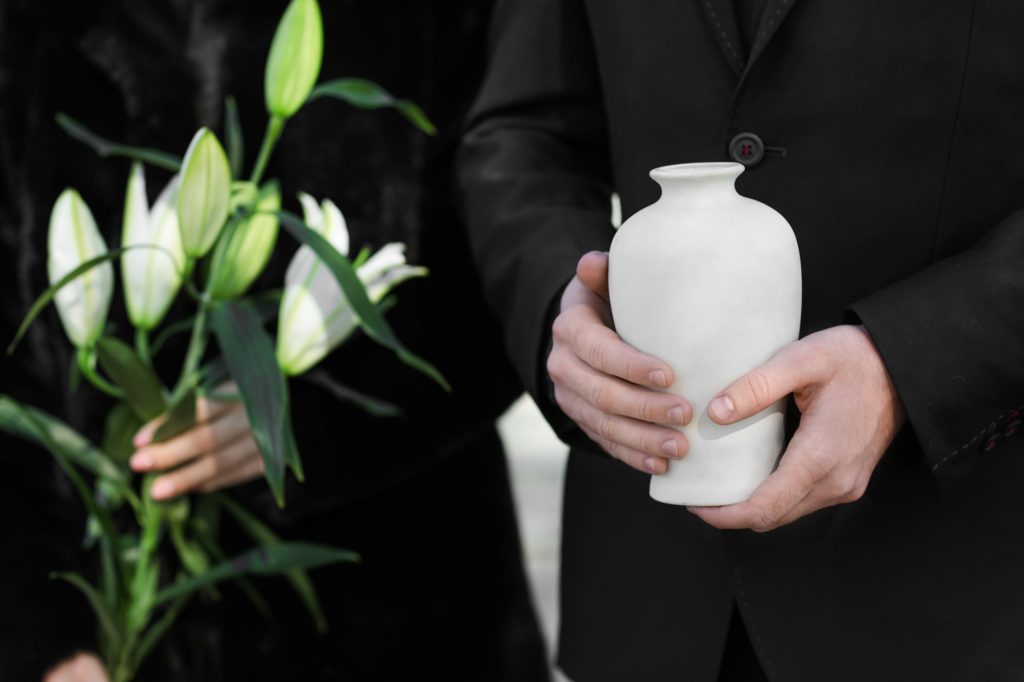
The process of cremation is rarely spoken about. In our society, death often considered a taboo subject though it’s a natural part of our existence. If your loved one recently passed away, there’s nothing shameful about wanting to understand how your loved one’s body will be treated afterward.
We are here to help, any way we can. The sections below detail the cremation process from the identification of the body to the scattering of ashes. When you’re ready to learn the answers to your questions, read on.
The cremation process is designed to ensure the living commemorate and send-off the person who’s passed.
Preparing a body for cremation begins by the funeral home exposing the body to high temperatures. The resultant ashes are placed reverently in an urn which is given to the family of the loved one.
They may choose to keep the ashes in honor of connection. More often, however, they choose to release the ashes back to the earth from whence it came. Forests, oceans, mountains, and lakes are frequently chosen as a soothing final resting place to scatter the ashes.
To answer most of your frequently asked questions about cremation, we’ve outlined each step of the process below.
A medical professional must first define the cause of death of the recently deceased. They collect personal information and file all the details. Then they send this information along with the body to the caretakers.
The caretakes take over next. They follow meticulous tagging procedures to ensure they’re working with the correct body. This identity check continues during each step to ensure the correct body is prepared and cremated.
This process continues even after the removal of the ashes and up until the ashes are placed in the cremation vessel. All the while, a fire-resistant metal tag accompanies the ashes and body.
There’s never a risk the caretakers could mistake the identity of the one who’s passed.
The most often asked question we receive is, how is a body prepared for cremation? Caretakers ensure that all courtesy is given to the recently deceased.
First, some surgical implants, such as pacemakers, are removed. If they aren’t, they can create unanticipated consequences during the later stages of the process. Jewelry is also removed to protect it from the fire, and it’s set aside.
The caretakers then place the body inside a cremation container.
State law requires a body to be cremated in a rigid container that’s easy to handle and made from combustible materials. No embalming or casket is required. Reputable owners include a cardboard container in the upfront price of the cremation services.
Other containers are available for an additional fee. You need to ask your cremation provider upfront to avoid this hidden fee. You may be charged if a more expensive container is used, even if you didn’t ask for it.
The caretaker preheats the combustion chamber. After the body has been prepared and rests in a container, the caretaker places it inside the preheated cremation furnace. The incineration of the body takes place under temperatures ranging from 870 to 980 degrees Celsius (1,598–1,796° Fahrenheit).
This intense heat reduces the body to its component elements. After the caretaker finishes cleaning up, all that’s left is ash.
After the ashes cool, the caretaker checks them over for remaining impurities. In some cases, fine bone fragments are left. In others, metal from surgical implants is found.
The caretaker removes them by hand and disposes of them in the appropriate, state-approved fashion. Afterward, the caretaker moves the remaining ashes to a device called a cremulator. It refines the ashes further until all that remains is a fine powder.
This is the point at which the cremation is considered complete. The body has been fully prepared. It’s been cared for and treated with the respect it deserves.
After the ashes have been purified in the cremulator, the caretaker moves them to a container chosen by the departed’s loved ones. The container may be a permanent resting place or used until the ashes are scattered. Urns are the most popular.
Some people also choose a temporary urn made of plastic or cardboard. The temporary urn saves on unexpected costs in the short run until loved ones can find a more permanent urn or scatter the ashes.
The caretakers then call the loved ones of the dearly departed to make an appointment to pick up the urn.
According to state law, a loved one may scatter cremated remains over uninhabited public land. The loved one may also use public waterways or the private property of a consenting owner. There are certain EPA guidelines for burials at sea if that is what the loved one chooses.
Often accompanying the scattering of ashes is a quiet service to remember the recently departed. Family and friends remember the life of the person they lost. They share memories, give thanks, and say goodbye.
As you can see, the process of cremation is respectful, though the crematorium must adhere to rigid laws set out by their state. Those who work at crematoriums work with the bereaved every day, so they know what a difficult process it can be when a loved one passes. They’re there to help if you have questions about this rarely talked about subject.
If you’re in a similar situation, reach out to make cremation arrangements online or in person. We’re here to answer all of your questions every step along the way.

Contact | Obituaries | Site Map | Privacy Policy | Terms of Use | Our Commitment to Accessibility |Fort Worth Cremation Services | Dallas Cremation Services | Website by FRM Websites